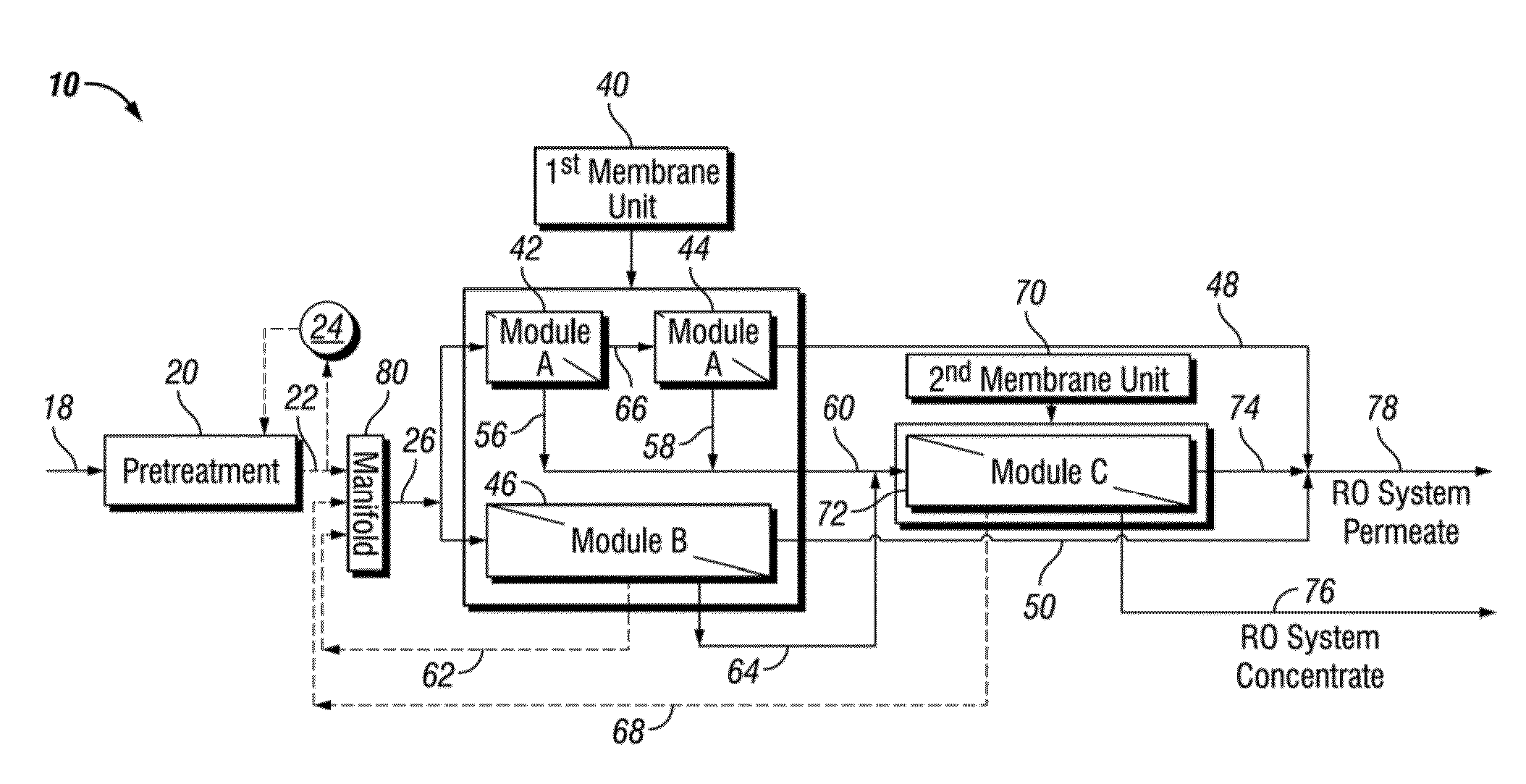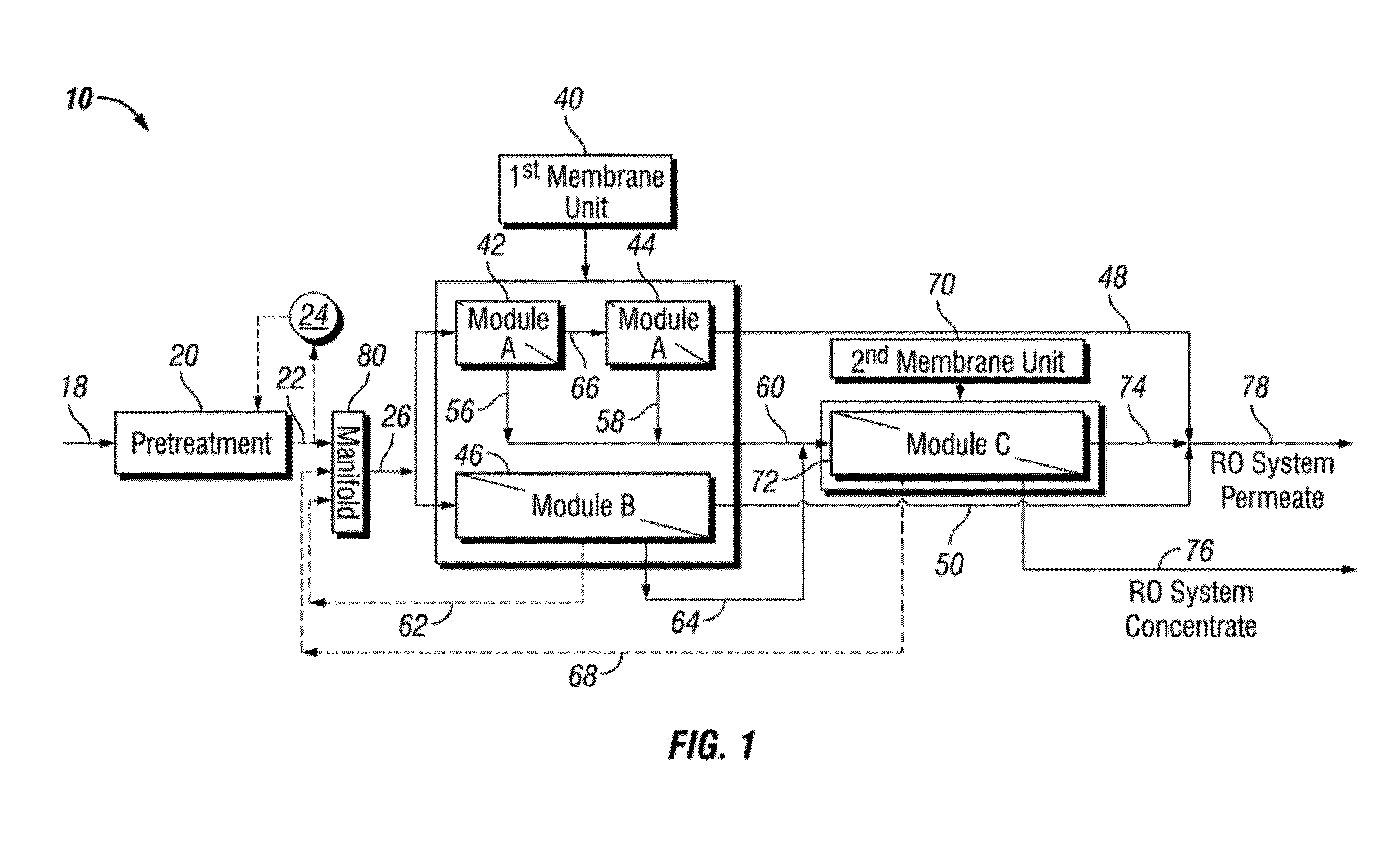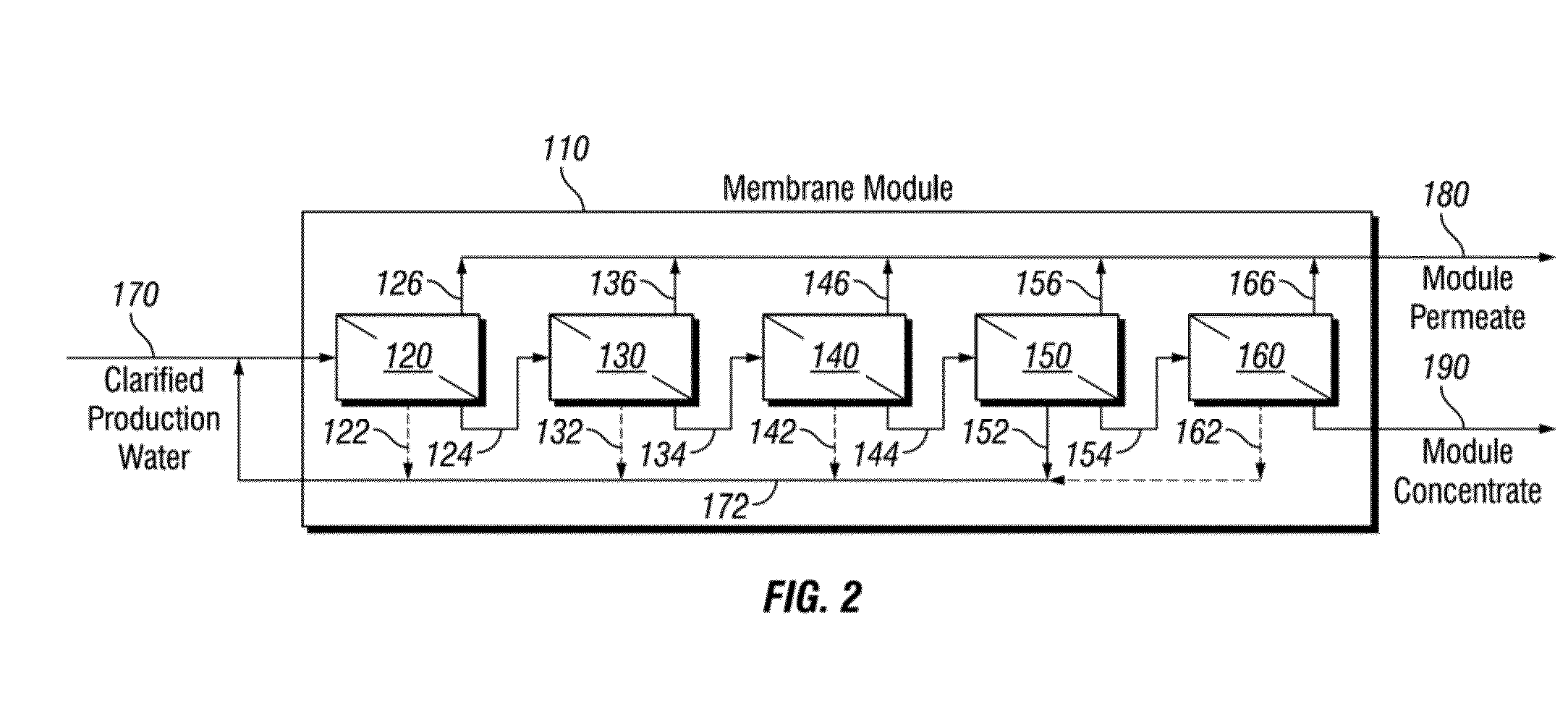Methods and systems for treating produced water
a technology of purification system and produced water, which is applied in the direction of multi-stage water/sewage treatment, treatment water, and borehole/well accessories, etc. it can solve the problems of membrane separation performance degradation, membrane scaling quickly degrades membrane separation performance, and further commercial use of membrane purification systems, so as to achieve less complex pretreatment
- Summary
- Abstract
- Description
- Claims
- Application Information
AI Technical Summary
Benefits of technology
Problems solved by technology
Method used
Image
Examples
example 1
[0114]A packed column about 8 feet high and about 9.5 inches in diameter (ID) was packed with approximately 80 pounds of ¼ inch and finer size crushed oyster shells. An aqueous solution containing organic contaminants, including BTEX compounds (benzene, toluene, ethyl-benzene and the xylenes) and soluble organics (soluble oil), was introduced at the top of the column at a flow rate between 0.4 and. 2.0 gpm. The average flow rate was maintained at approximately 1.0 gpm. Water was collected at the bottom of the column and analyzed using gas chromatography.
[0115]The results of the soluble organic and BTEX content in the inlet and outlet streams of the column are given in Table V. The detectable limit for the BTEX compounds was 0.1 ng / L. The total hydrocarbon was obtained using the purge and trap method. All dispersed oil was removed from the feed solution before entering the packed column, and the total hydrocarbon was therefore essentially soluble organics (or soluble oil).
TABLE VConc...
example 2
[0116]Produced water is treated to remove gas, oil, and larger particles. The produced water is then partially softened, after which antiscalant is added to the partially softened water, and the partially softened water is then run through a reverse osmosis system. The reverse osmosis system may include one or more reverse osmosis modules. In an embodiment of the invention, two RO modules are used. In the case of using more than one RO modules, the reject water from the second RO modules may be recycled back into the influx of the first RO module. In another embodiment, the RO module includes reverse osmosis / nanofiltrate (RO / NF) membranes.
[0117]In this example, produced water from one type of reservoir consists of approximately 3,800 ppm of total hardness. Partial water softening followed by one or more RO membranes yields purified water having a hardness of less than 1.0 ppm, to meet steamflooding requirements. Embodiments of the disclosure use The RO membranes may be high recovery...
example 3
[0118]Produced water is treated to remove gas, oil, and larger particles. This process can include a clarification module followed by flotation units and filters. It is anticipated that a flotation unit can remove up to about 95% of oil and some of the gases, such as hydrogen sulfide and carbon dioxide, from water. An ultra-filtration unit, such as a ceramic UF membrane unit may also be used prior to the softening and RO system of the current disclosure. The water may also be heated or cooled prior to entering the softening system (chemical or softener based), or after going through the softening system and before entering the RO system. For example, the water may be cooled to lower than 113° F. (45° C.) prior to going through the RO system but after going through the softening system. As another example, the water may be heated prior to chemical softening methods. After pretreatment, the produced water is then partially softened in a partial softening unit. The unit may use chemica...
PUM
| Property | Measurement | Unit |
|---|---|---|
| size | aaaaa | aaaaa |
| pH | aaaaa | aaaaa |
| pressure | aaaaa | aaaaa |
Abstract
Description
Claims
Application Information
 Login to view more
Login to view more - R&D Engineer
- R&D Manager
- IP Professional
- Industry Leading Data Capabilities
- Powerful AI technology
- Patent DNA Extraction
Browse by: Latest US Patents, China's latest patents, Technical Efficacy Thesaurus, Application Domain, Technology Topic.
© 2024 PatSnap. All rights reserved.Legal|Privacy policy|Modern Slavery Act Transparency Statement|Sitemap



